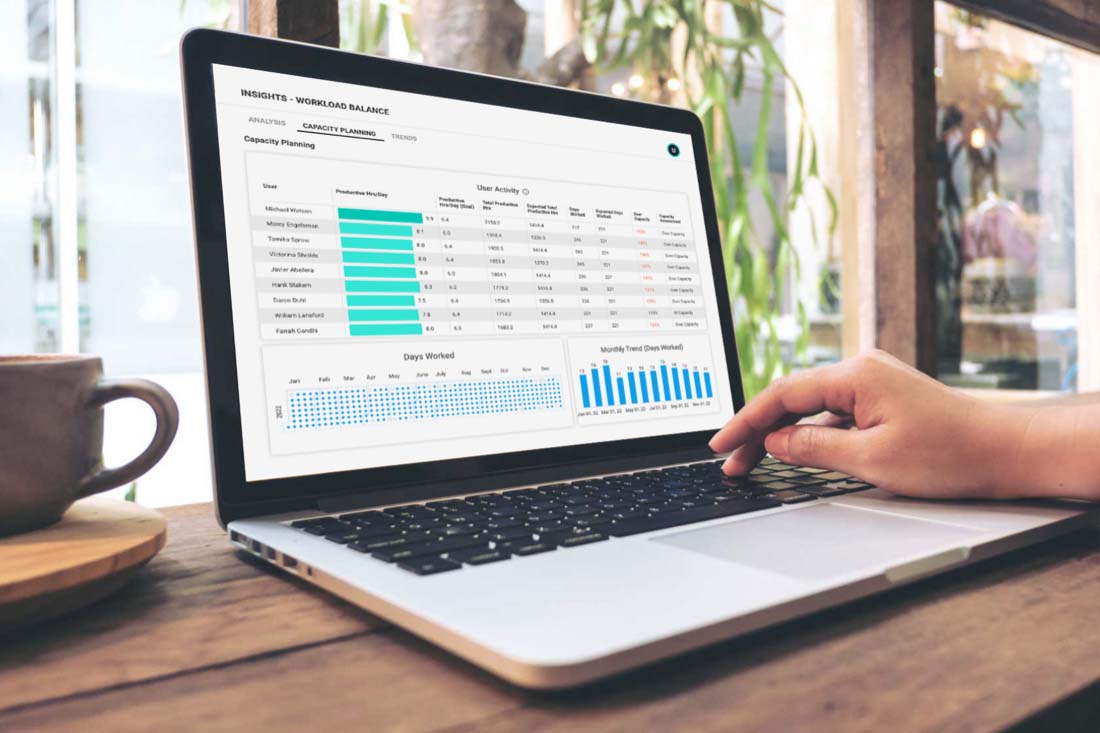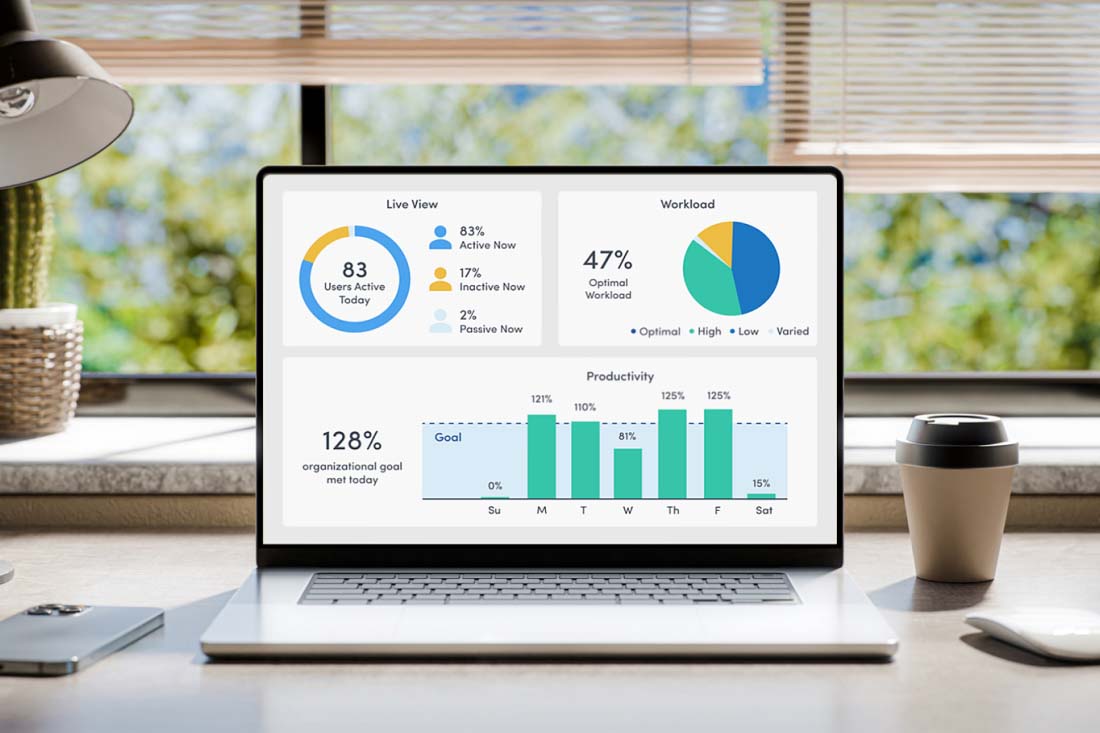Workforce capacity management has a direct impact on business performance and ROI. However, many business leaders face an uphill battle in getting this critical process right.
Overextend your workforce, and you’re bound to face disgruntled employees and dissatisfied customers. But compensate too much in the other direction, and you’ll end up paying for resources you don’t need.
To help you get a handle on effective capacity management, let’s take a look at the most common challenges organizations face today along with proven strategies you can use to address them.
What is capacity management?
Capacity management is the ongoing process of optimizing your workforce to ensure you have the right level of staffing to match workloads. At its core, capacity management lays the foundation for supporting your most valuable asset — your people.
It involves analyzing your current personnel, predicting future business needs and taking steps to ensure you can meet demand moving forward. Put simply, capacity management ensures your organization has the right number of employees, in the right roles, to move the business forward.
Why is capacity management important?
Many business leaders still think of capacity management within the context of equipment-heavy industries like manufacturing or hands-on departments such as customer service. In actuality, the need for effective resource planning extends to virtually every industry, team and business size.
Managing capacity efficiently is one of the most reliable ways to increase workplace productivity, reduce burnout, minimize downtime and meet customer expectations. It ensures you’ll always have the right number of employees with the right mix of skills.
Common capacity management challenges and how to solve them
Before you attempt to plan for the long-term needs of your business, it’s important to be aware of the capacity issues facing managers in today’s evolving workplace.
Once upon a time, ongoing capacity management was made possible by a few simple, straightforward tactics, such as monitoring company-owned workstations and tracking office badge access.
Then came remote, flexible and hybrid work models — not to mention bring your own device (BYOD) policies. While these new ways can be great for employee productivity, each one adds a new layer of complexity when it comes to understanding and anticipating staffing needs.
That’s not to say these challenges can’t be easily addressed. You just need to be aware of potential bottlenecks so you know when (and how) to address them
The three most common capacity planning challenges include:
- Imbalanced workloads
- A lack of data
- Future uncertainties
Let’s look at each capacity issue in more detail.
1. Imbalanced workloads
Capacity management is not just about hiring more staff. In fact, that should come after you analyze workload distribution.
Are there skills gaps within your current workforce? Are you giving high-performers more and more work even though your junior employees don’t have enough to do? Do you have underutilized employees who could use more training?
If you answered “yes” to any of these questions, there’s a good chance your current workloads are imbalanced.
Left unchecked, this can lead to much bigger problems. Overworked employees will begin to resent colleagues with lighter workloads, while underutilized employees will start to begrudge the company for letting their skills go to waste.
This situation not only leads to burnout, but can also have a huge impact on morale and engagement. And unfortunately, simply adding more staff without a capacity management plan in place will just exacerbate the problem.
The solution: workload distribution
Workload distribution is one of the best ways to address this imbalance. By regularly evaluating who’s working on what, you can correct inequalities and ensure tasks are assigned in a way that’s fair and efficient. Of course, having this information is its own challenge related to capacity management, and we’ll discuss that next.
2. A lack of data
A lack of real-time data is problematic for managers trying to understand and plan for capacity needs. This is especially true if you manage knowledge workers who spend minimal time at a company office.
When performance is measured solely by output, it’s difficult to see and understand what’s happening behind the scenes — how many hours people are working, what technology they use, what percentage of time is devoted to collaboration versus deep work… and the list goes on.
As a result, many business leaders still rely on best guesses and gut instinct when planning for busy seasons and expanding or reducing the workforce.
The solution: employee activity data
Rather than relying solely on loose information like headcount forecasts and employee opinions, use workforce analytics software to measure employee activity. Having these insights empowers managers to see how their team is working, which can be used for capacity management and implementing other changes to boost productivity while reducing burnout.
3. Future uncertainties
Too often, managers react to capacity challenges as they arise. This can happen when a once high-performing team starts missing important deadlines and you realize too late that workloads haven’t been properly distributed. Or when a top performer resigns out of the blue, just as your team is about to launch a big, demanding project.
In these and other scenarios, capacity management becomes a practice in crisis control rather than a product of strategic vision. And unfortunately, the result is a state of constant correction. When demand is high but capacity is low, you might react by hiring more staff or contractors — only to discover months later that you’re now overspending as demand dips again.
The solution: Predictive workforce analytics
Predictive workforce analytics lets you look at historical employee data to make predictions about future productivity. In the case of an unexpected resignation, you could review overlooked signs of burnout to correct the underlying capacity planning mistakes moving forward. Or you might evaluate current factors that could impact future capacity, such as wasteful meetings that pull people away from important tasks or offices that aren’t conducive to focused work.
By determining what today’s workforce will need to be productive tomorrow, you can determine hiring needs with far greater accuracy.
Overcome your capacity management challenges with insights from ActivTrak
Not sure where to start? ActivTrak can help address capacity issues through analytics. Our capacity planning dashboard makes it easy to regularly analyze workforce capacity across all your teams. Managers use it to:
- Make data-driven decisions about workloads
- Accurately identify headcount needs
- Guide quarterly capacity planning activities
Request a demo to discover how ActivTrak’s workforce capacity planning analytics can help position your business for long-term success.





